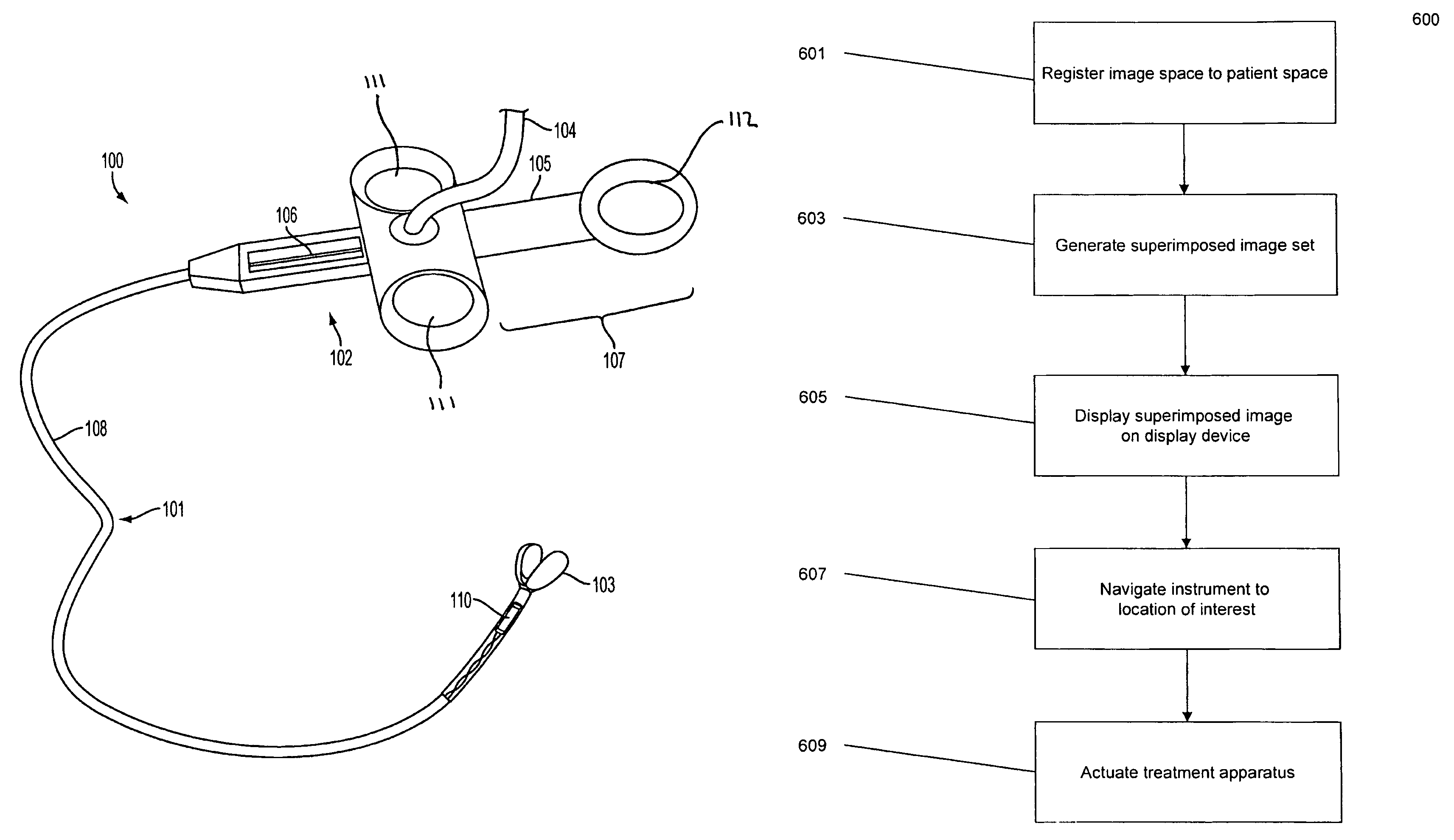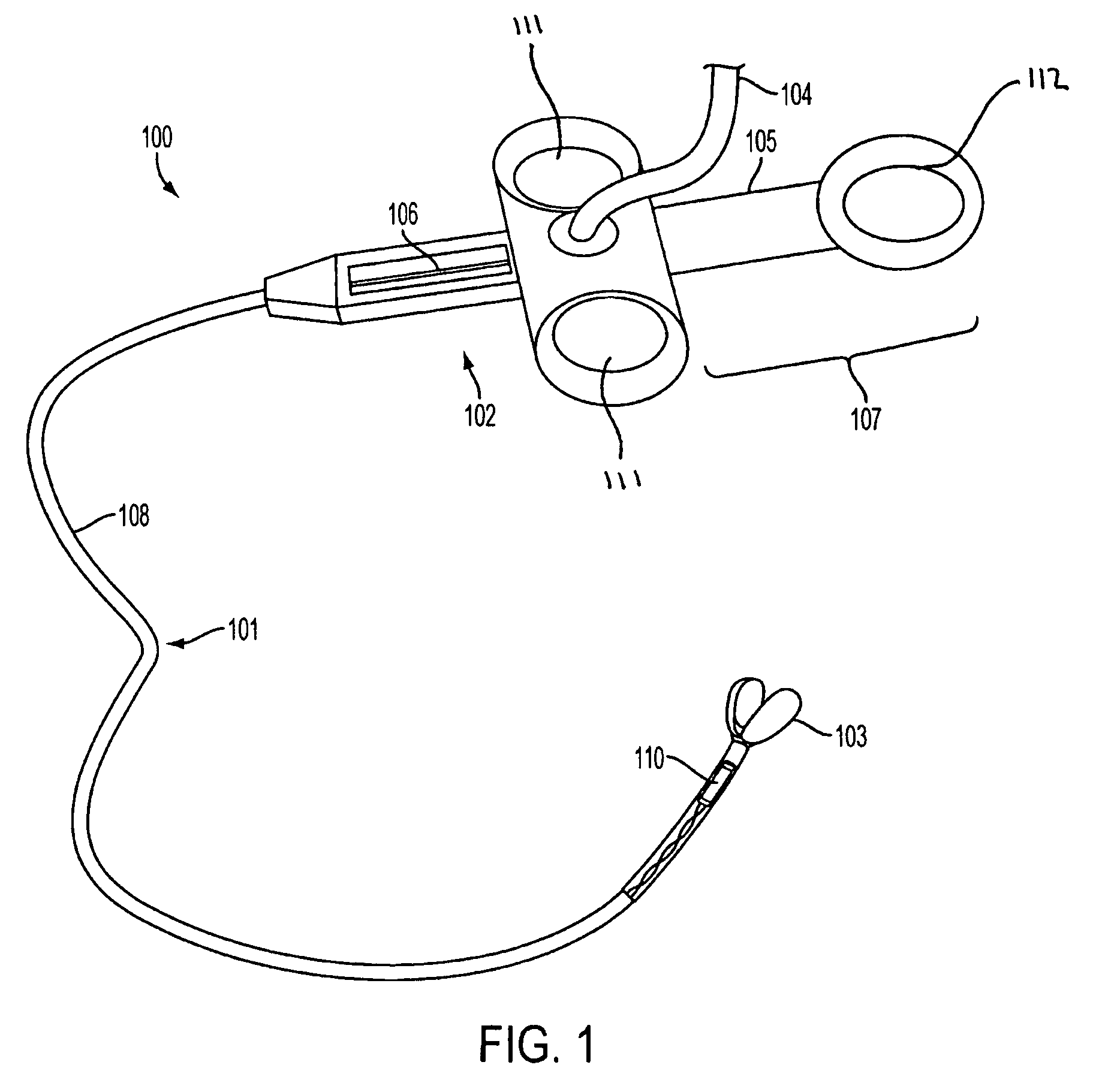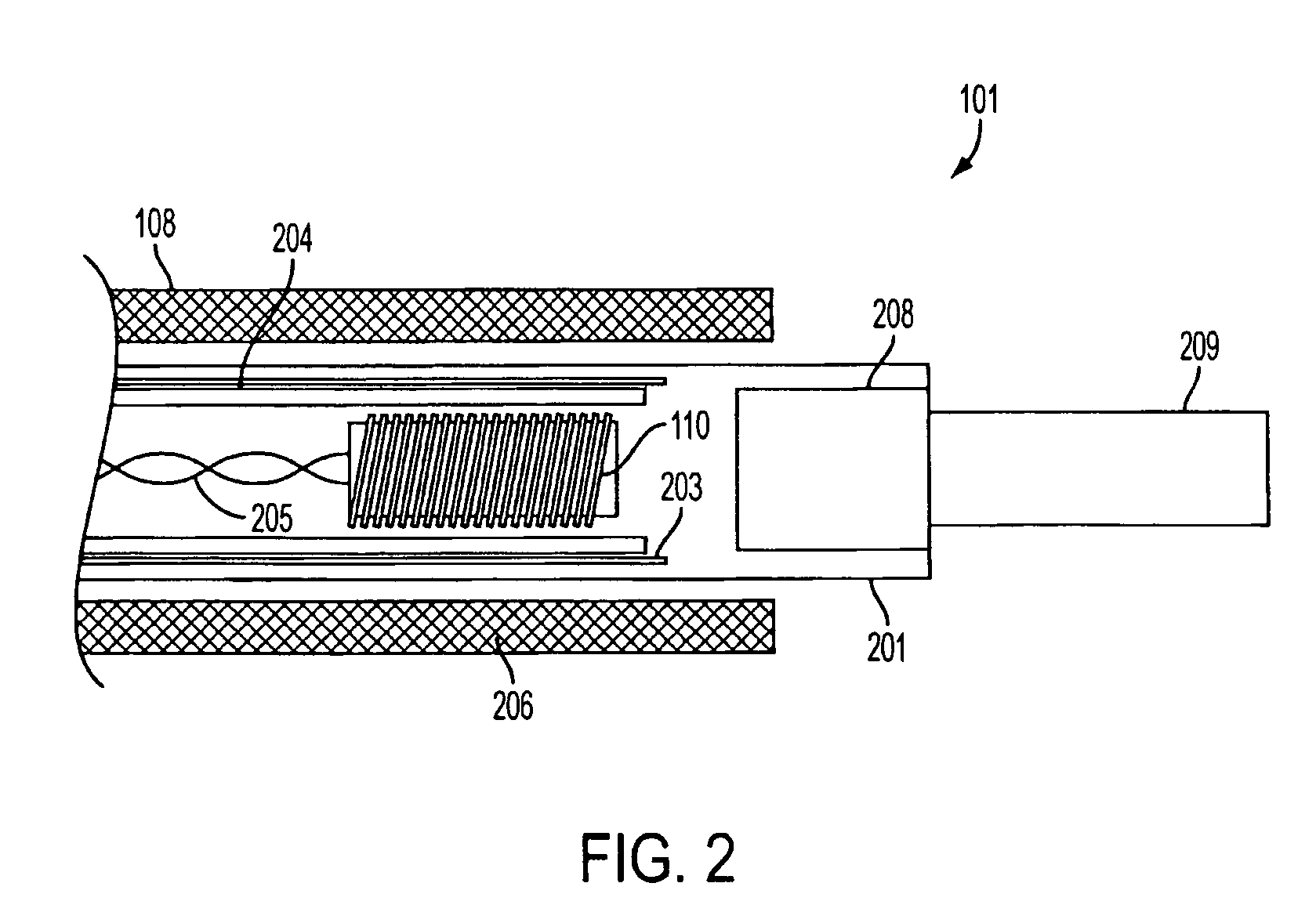System, method and apparatus for navigated therapy and diagnosis
a technology of navigation therapy and diagnostic equipment, applied in the field of system, method and apparatus for navigation therapy and diagnosis, can solve the problems of insufficient landmark identification, difficult directing the tip of the device into the location of interest, and iatrogenic damage to the tissue, etc., to achieve high torque transmission, high pushability, and high kink resistance
- Summary
- Abstract
- Description
- Claims
- Application Information
AI Technical Summary
Benefits of technology
Problems solved by technology
Method used
Image
Examples
Embodiment Construction
[0032]In one embodiment, the invention provides an image-guided medical instrument, which can be used in minimally invasive surgery. FIG. 1 illustrates an image-guided medical instrument 100, according to an embodiment of the invention. In some embodiments, image-guided medical instrument 100 may include a body member 101, a handle 102, a treatment apparatus 103, an operating element 107, and / or other elements.
[0033]In one embodiment, body member 101 may include one or more elongated flexible elements or materials such as, for example, elongated tubing, wires, and / or other elements. For example, in one embodiment, body member 101 may include tubing 108. Body member 101 may also include coiled springs, insulating and / or protective jackets, braided elements, and / or other elements.
[0034]In one embodiment, body member 101 may include first and second ends and may connect handle 102 to treatment apparatus 103 over or through the flexible elements comprising body member 101.
[0035]Body mem...
PUM
 Login to View More
Login to View More Abstract
Description
Claims
Application Information
 Login to View More
Login to View More - R&D
- Intellectual Property
- Life Sciences
- Materials
- Tech Scout
- Unparalleled Data Quality
- Higher Quality Content
- 60% Fewer Hallucinations
Browse by: Latest US Patents, China's latest patents, Technical Efficacy Thesaurus, Application Domain, Technology Topic, Popular Technical Reports.
© 2025 PatSnap. All rights reserved.Legal|Privacy policy|Modern Slavery Act Transparency Statement|Sitemap|About US| Contact US: help@patsnap.com



